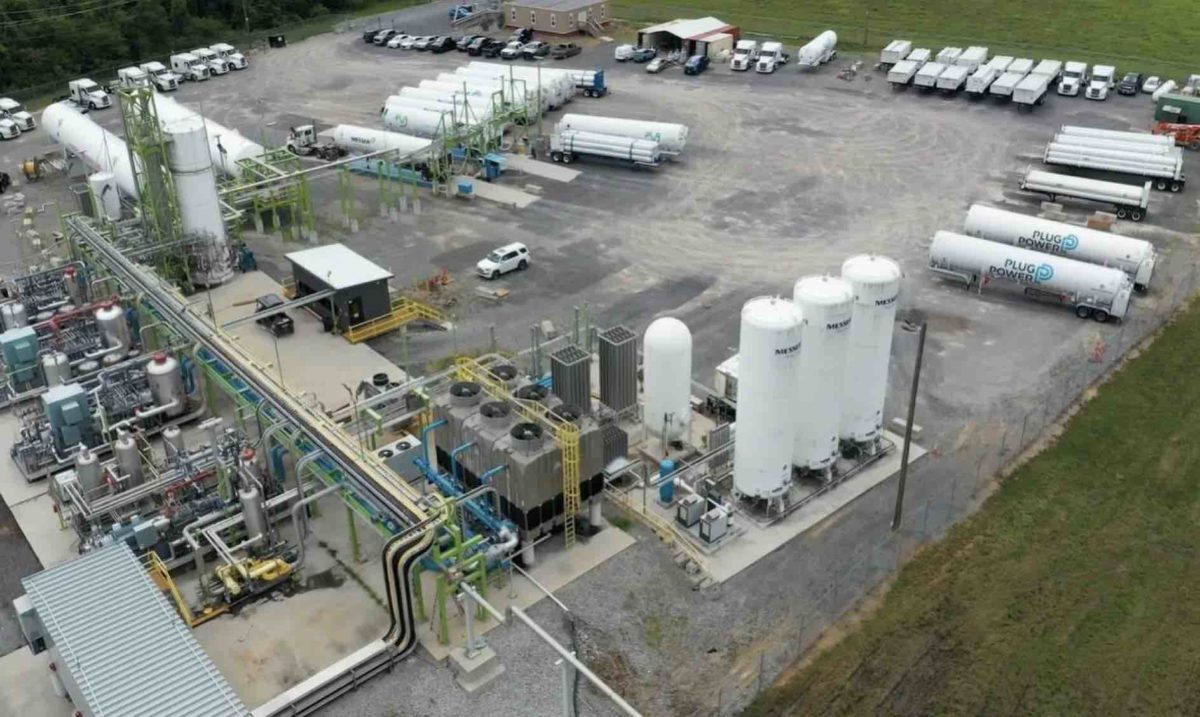Shares in Plug Power, one of the most prominent hydrogen technology companies in the world, and one of the key partners to Andrew Forrest’s first major green hydrogen venture in Australia, crashed on Friday after it raised concerns about its ability to continue business.
The stock in Plug Power slumped 40 per cent, after the company chronicled the supply crunch that has crippled the nascent hydrogen market in the US, forcing its own and many other hydrogen refuelling stations to close, and also its own funding problems.
“The company is projecting that its existing cash and available for sale and equity securities will not be sufficient to fund its operations through the next twelve months,” Plug said in a statement.
The issue is important for Fortescue because Plug Power last month was named as the preferred supplier for 550MW of hydrogen electrolysers for Fortescue’s Gibson Island green hydrogen and ammonia project in Queensland.
The two companies also signed an MoU that includes potential collaboration on a number of large green hydrogen projects on a global basis, including equity swaps in Fortescue’s proposed Pheonix hydrogen plant and in Plug Power’s Texas hydrogen plant.
The deal also envisaged Plug Power as the supplier of electrolyzers, liquefiers, tanker trailers and stationary storage tanks for the Pheonix hydrogen plan, and other green hydrogen production projects in North America.
But its quarterly results presentation highlighted some of the major problems affecting the industry right now, which has meant refuelling stations have been able to access supplies and have been forced to close.
“Many of the California fueling stations have been without fuel or have had limited fuel on a regular basis over the past several months,” CEO Andy Marsh told investors in a conference call.
“Additionally, the price of these stations for hydrogen has been over $30 per kilogram at the pump, about twice the normal price.
“(The) good news is the network is now stabilized and many of these planned outages have subsided, plus additional capacity will be coming online. We expect our Tennessee plant will be back online producing hydrogen by the end of the year.
“One of our major suppliers is upgrading one of their facilities to allow the plant to operate at full nameplate capacity in the coming months.”
Marsh sought to downplay the problems as “just a bump in the road” and a transitory issue for a new industry, and the company cited the Fortescue deal as one of its major coups that allows it to focus on bigger picture developments.
CFO Paul Middleton also cited Fortescue as a solution to the company’s capital needs because of its deep pockets.
“In the case of Fortescue, the fact that they’ve got interesting investment alternatives and platforms that we can co-invest in their platforms, that can be a meaningful opportunity for us,” Middleton said.
But the reaction from the stock market was emphatic. Plug’s shares slumped 40 per cent, losing $US2.40 to close at $US3.53 a share, well below its peak of $US18.88 a share reached earlier this year.
The real concern was for the company’s cash resources. It revealed a nine quarter loss of $US720 million, and a cash burn of $US1.35 billion. It’s on course to consume a further $US450 million by the end of this year.
But it only has about $US110 million in cash and equivalents at present, and a further US$226 million in “restricted cash” and a further $US389 million in “available-for-sale securities,” but that will not solve its long term funding issues.
Fortescue is not entirely dependent on Plug for the supply of electrolysers for its grand green hydrogen plans, which will include significant projects in Australia, the US, Europe, Africa and south America.
It has signed a long term supply deal, at least in principal, with Electric Hydrogen (EH2), and is also starting to produce the first of its “home grown” prototype electrolysers at its new factory in Gladstone, which nominally has a capacity of 2GW a year.
Plug Power was originally going to licence its technology for that manufacturing plant, but the plan fell through before Fortescue turned back to Plug Power for its Gibson Island project.
A spokesperson for Fortescue told RenewEconomy that the company is “proceeding as planned with our pipeline of green investment options, and noted Plug Power is not its only supplier for electrolysers.
“Fortescue has kept open multiple options for electrolyser supply – including our own manufacturing plant at Gladstone in Queensland, and we’re working with multiple partners on supply.”










